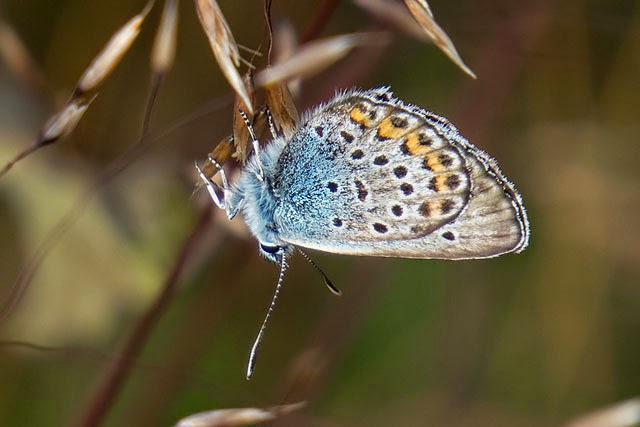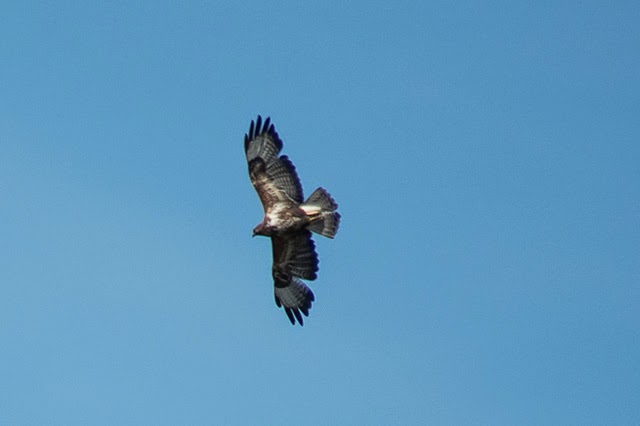I visited some friends in NE Norfolk for a mid-week break but not expecting any ornithological wonders. However, a visit to some sandy wooded areas revealed some Dartford warblers plus big numbers of silver-studded blue butterflies that seemed to love the young heather and gorse on the wide pathways. The butterflies were early this year so their condition was a bit grubby, I couldn't find a fresh one to photograph!
A brown female
Female
They are supposed to show tiny blue 'studs' in the black marginal spots on the hind wing but due to their age they were hardly visible. What I did notice was the very pale blue along the front of the forewing. A few tiger beetles were scampering about on the sandy areas allowing one quick photograph.
Tiger Beetle - one of the fastest runners in the insect world
A few Small Skippers
Another day we visited Hickling Broad hoping to see the swallowtails which came up trumps due to the weather. It seems the sun is so important as when it was out they were on the wing over the reeds but when it went in they all dived into the reeds out of sight every time! Photography was almost out of the question due to their distance but my keen spotting accomplice found one on a thistle fairly close but was away after two shots!
A few Norfolk hawkers were seen but better seen in Kent now I think! The usual black-tailed skimmers, common blue damselsflies etc. were about plus some nasty biting insects. Something bit my neck which I pulled off not knowing what it was but really stung coming out in a large rash requiring a visit to a pharmacy for antihistamine and cortisone cream (still not fully gone). Nothing normally bites me!
One of the paths at Hickling
A few birds seen were, avocets, blackwits, egrets, chiffs, willow warblers etc. a nice reserve but charges a £4.50 entrance fee unless you are a member of the NNT..




























































